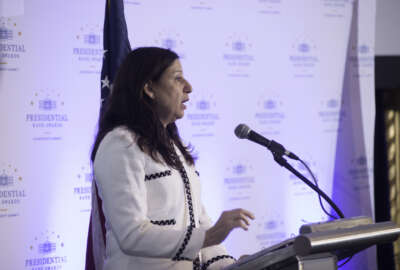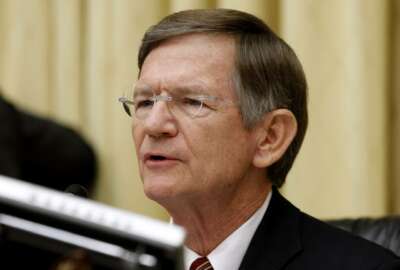
Federal agencies score all-time high on customer satisfaction survey
Customer satisfaction with the federal government reached an 11-year high in 2017 according to the American Customer Satisfaction Index.
Subscribe to Federal Drive’s daily audio interviews on iTunes or PodcastOne.
Maybe federal websites have improved, or perhaps federal employees are more courteous on the phone. Or maybe things simply just happen a lot faster these days.
Whatever the reason, satisfaction with the service they get from the federal government reached an 11-year high in 2017, according to the results of the latest annual survey from the American Customer Satisfaction Index.
“It has jumped up to 69.7 on our 0-to-100 scale. That’s the highest score we’ve seen on this particular survey,” Forrest Morgeson, director of research at ACSI, said on Federal Drive with Tom Temin. “So, it’s not only a big year to year increase, but it’s also a new high, if you will.”
The highest score on the survey usually goes to the private sector. Morgeson said private sector companies tend to score in the high 80s. Even so, when broken down, some agencies still score higher numbers.
“It’s only a handful … but we tend to see a few agencies and departments that provide what we would consider to be private sector-like customer satisfaction,” Morgeson said. “The government as a whole tends to get pulled down because there are certain agencies and departments that for obvious reasons are really dissatisfying.”
Agencies that receive the most push back from the public are those that provide regulatory services and requirements. One example is the Internal Revenue Service, which has a satisfactory rating that falls around 61 percent, he said.
On the opposite side of the spectrum, the Justice Department rating fell around 81 percent. The department has a smaller sample size in terms of its public-facing mission, Morgeson said, but it did score higher in this survey than in years past.
“Normally we’ve seen the Department of Interior lead the way because of its mission in maintaining the National Park Service, which tends to be very popular,” he said.
Even the Homeland Security Department rating was above average, falling around 72 percent. DHS typically falls somewhere at the bottom.
“This is an important story in and of itself, because just within the last few years, the Department of Homeland Security has been competing with the Department of Treasury for the lowest satisfaction among the federal departments,” he said. “That’s widely attributed in our study to its relationship with TSA, which … is not something that a lot of people are really pleased to have to experience.”
Customer and employee satisfaction is interrelated as well. When federal and private sector employees are happy with their jobs, customer service tends to be more positive as a reflection.
Survey technique
The survey is conducted by random sampling. ACSI screens potential interviewees who have recently dealt with the federal government and its services.
“That’s an important distinction within our study … we’re looking at actual customers rather than people that just might have an opinion of the federal government,” Morgeson said. “Because most people have an opinion.”
Almost 3,000 people were interviewed for the 2017 survey. These customers had experiences with more than 50 federal agencies within the last 12 months.
The survey team found that party affiliation made a significant difference in satisfaction, but did not change the overall statistics.
“We’re not measuring satisfaction with the political system per se, or with politicians, or with an administration, but rather with the federal government and services,” Morgeson said. “Nevertheless, a lot of times, political affiliation can have an impact … and can bleed into one’s frame of perception of something like federal government services.”
Despite Republicans holding the highest offices currently, he said the percentage of democrat satisfaction from the Obama administration to the beginning of the Trump administration had not changed.
“The gain that we’re seeing is coming from those who identify as independents, or those who identify as ‘affiliated’ with another party,” he said. “It’s really interesting and different than we suspected we might see in the data.”
During the transition from the Bush administration to the Obama administration, the satisfaction numbers were low for most of the agencies. So hardships on the economy, such as the Great Recession, do take a toll on how satisfied customers are with federal agencies.
Government spending has declined, as the economy picked back up again. Morgeson said this also could be a reason why customer satisfaction is climbing.
“It now looks like we’re sort of finally recovering from everything that’s gone on across the three different presidential administrations,” he said. “It seems like thing are finally getting back to normal.”
Copyright © 2025 Federal News Network. All rights reserved. This website is not intended for users located within the European Economic Area.
Steff Thomas is a digital editor at Federal News Network.
Related Stories





